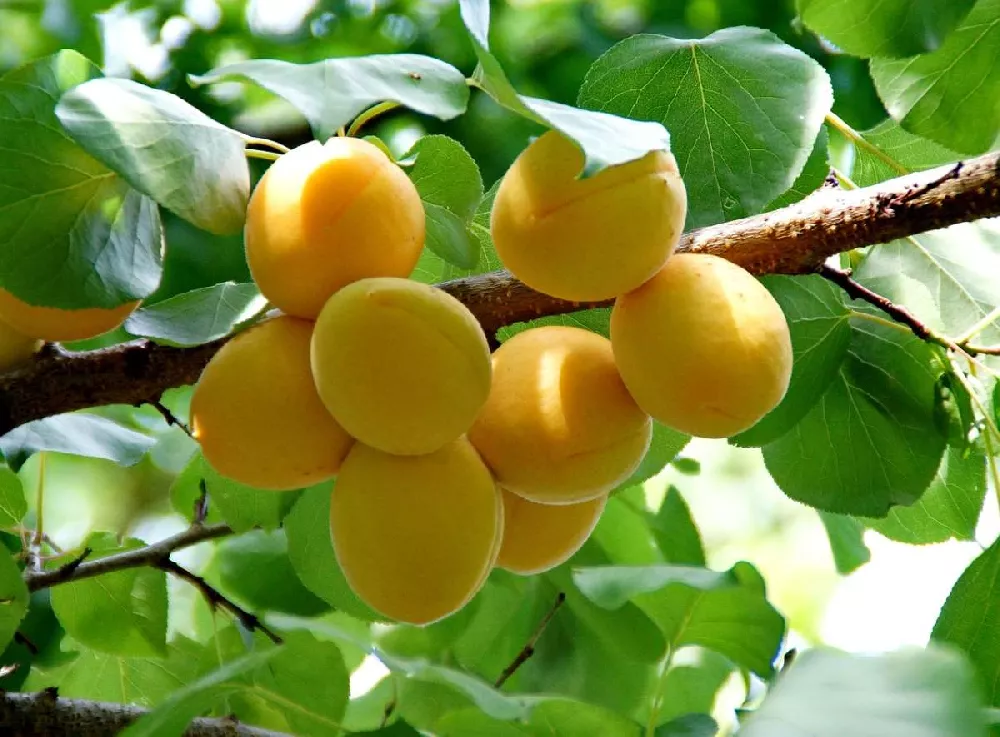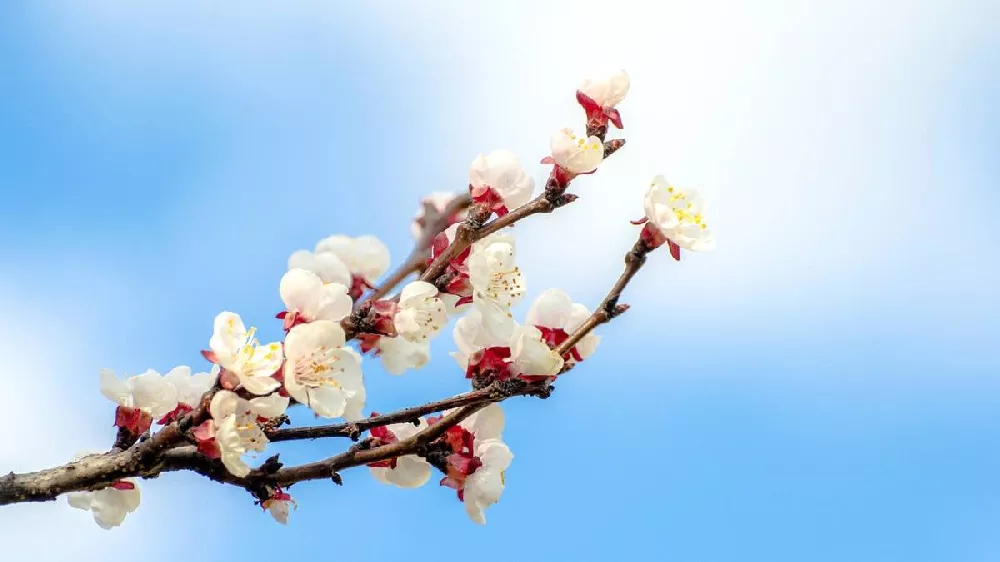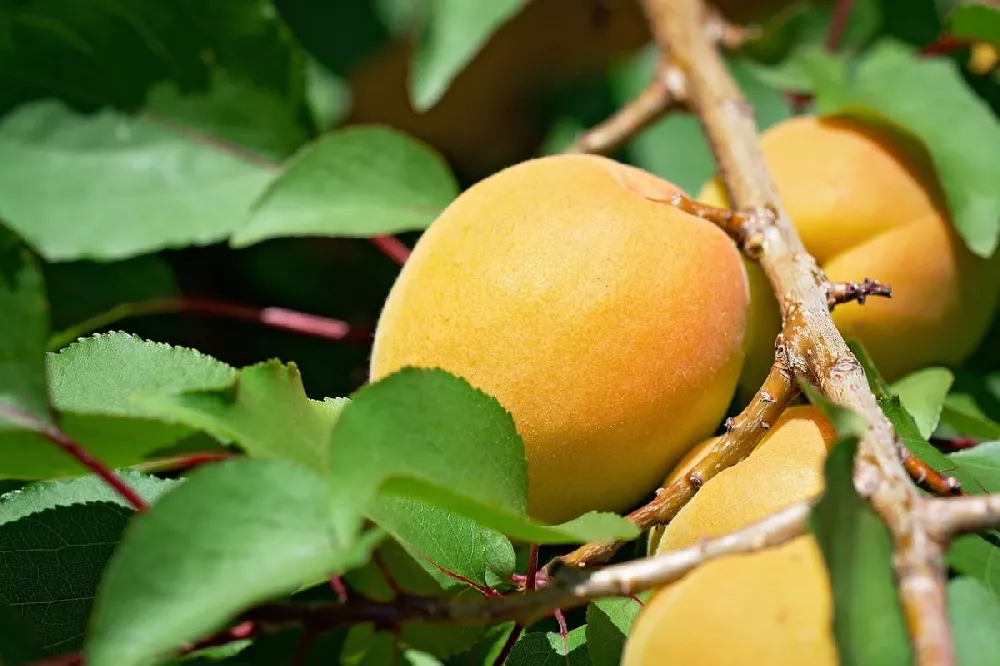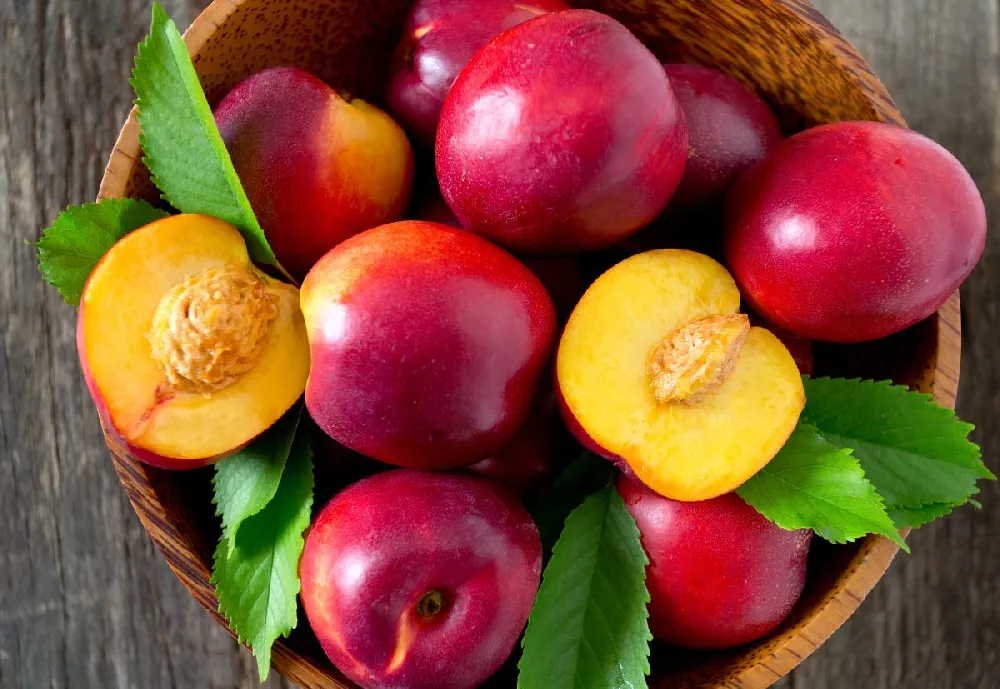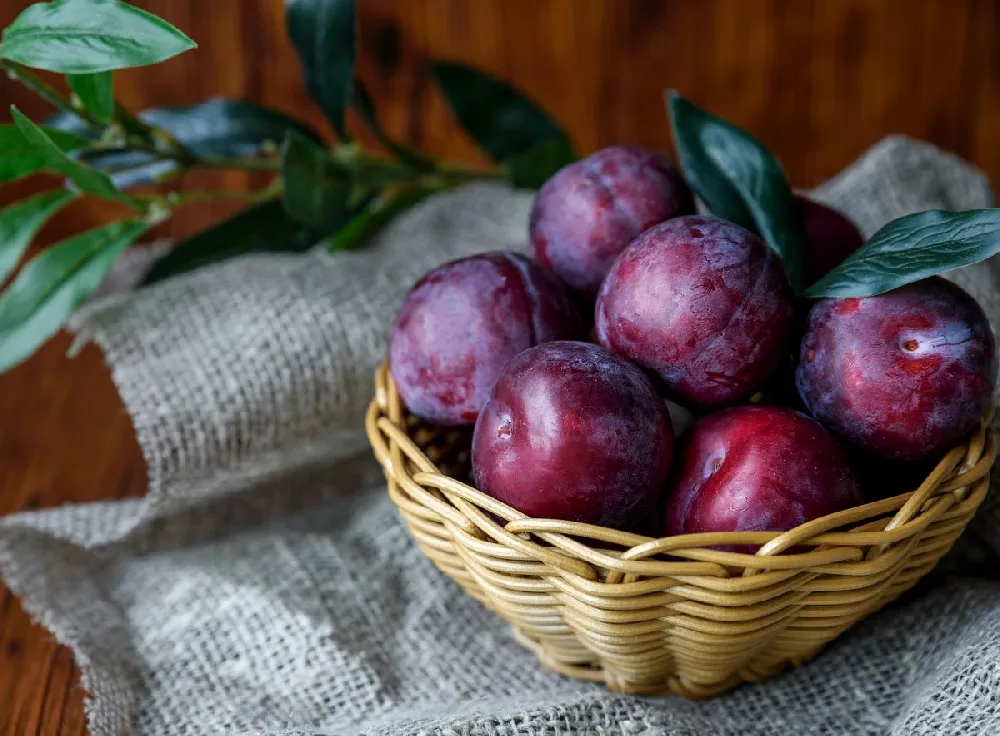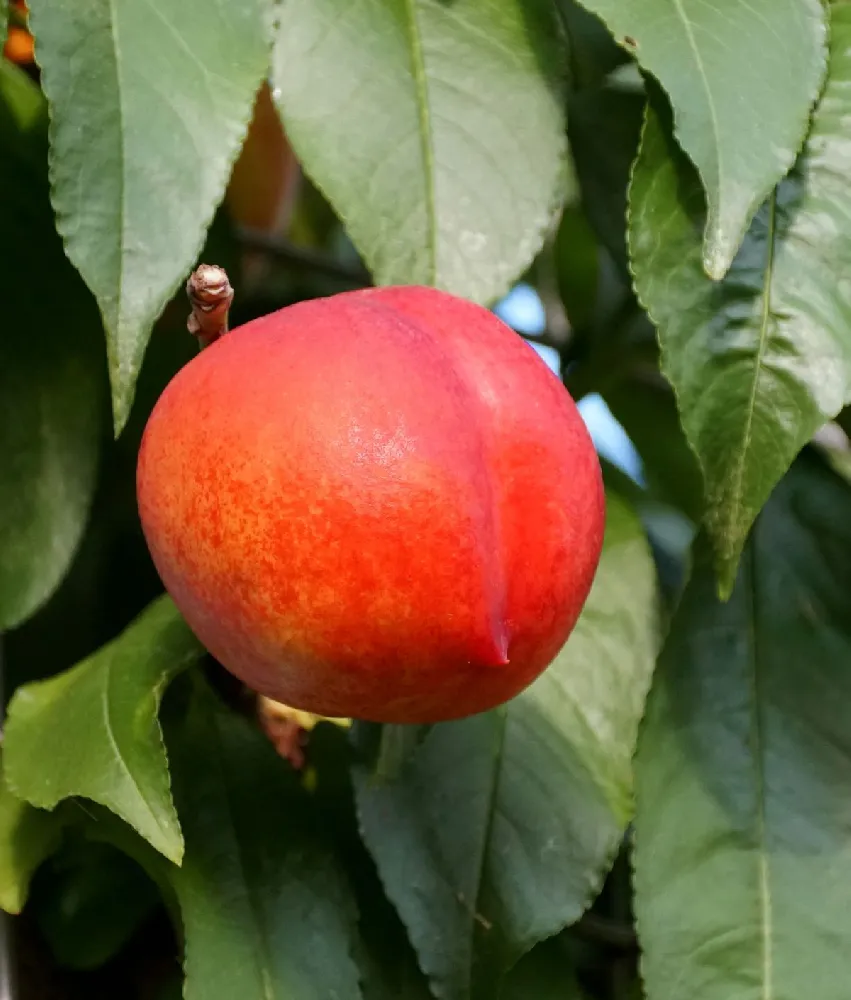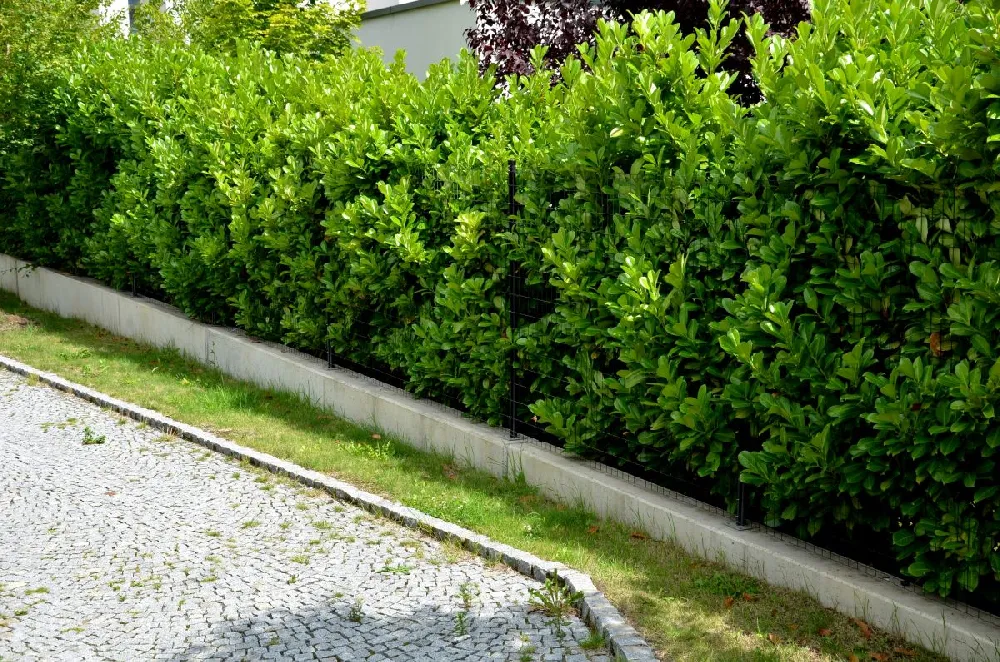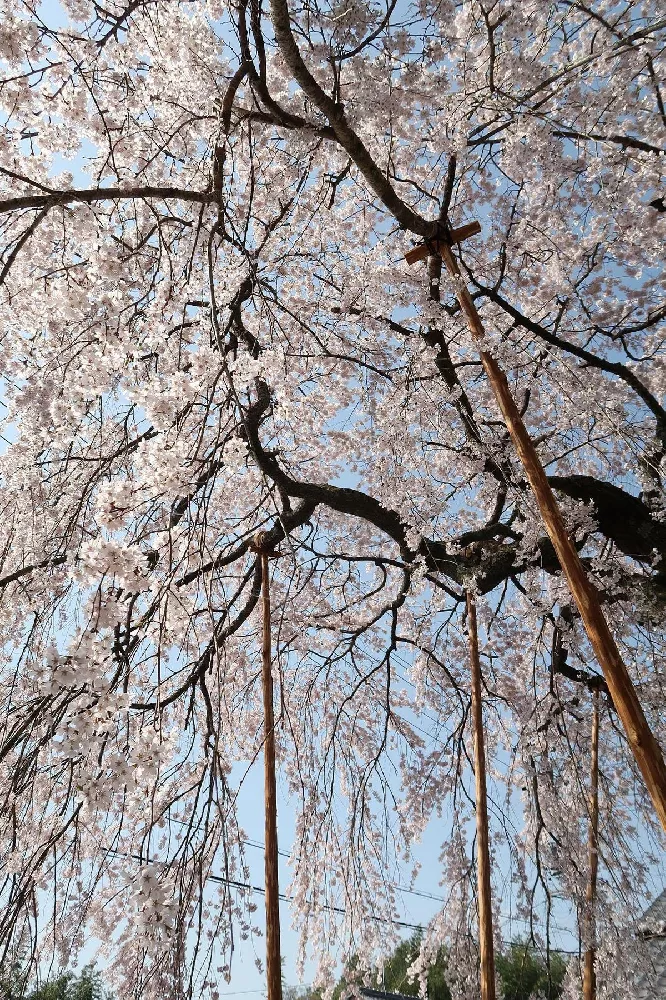- Home >
- Ornamental Trees >
- Gold Kist Apricot Tree
Gold Kist Apricot Tree for Sale - Buying & Growing Guide
The aptly-named Gold Kist Apricot Tree, Prunus armeniaca 'Gold Kist,' does indeed seem to have been kissed by the sun, as it produces sweet, golden-yellow fruits that melt in your mouth or add flavor and succulence to your baking and cooking efforts. These trees are heat-lovers and are well-suited to warmer climates, where they thrive in just about any type of soil. A semi-dwarf, Gold Kist Apricot is perfect for smaller gardens, where it takes up little space while still producing a bounty of fruit. It's also self-pollinating, so you can be sure of a harvest even if you only have one tree. Here are a few more reasons to consider adding one or more to your garden:
- Trees may produce fruit as early as the first year after planting.
- Deep green leaves and rounded canopy make it an attractive specimen tree.
- Pretty pink flowers cover the tree in spring.
Enter your zip code to find nearby stores that may carry this plant.
Plant Care
Sunlight

Your Gold Kist Apricot Tree will thrive in full sunlight, at least six hours of direct sunlight a day.
Watering
Water about once a week during the growing season, giving your tree an inch of water each time.
Fertilizing

Apply a high-nitrogen fertilizer in early spring once your tree has started fruiting.
Planting and Care
Planting instructions
Site your tree in soil that drains well and receives at least six hours of sunlight a week. Unpot the tree and tease out any encircling roots, which can girdle the tree and slowly kill it. Dig a hole that’s as deep as the root ball and twice as wide. Place the tree in the hole, spreading out the roots. Holding it upright and steady, fill in around it with topsoil, tamping down as you go to eliminate air pockets. Water thoroughly. Apply a two to three-inch layer of organic mulch such as bark chips around the root zone to conserve moisture and hinder weed growth but keep it from touching the trunk to avoid problems with rot.
Watering and nutrients
When newly planted, water a few times a week until you start to see robust new growth on the branches. Then taper back to watering once a week, giving your tree about an inch of water each time. If your weather is very hot or dry, increase watering accordingly. There is no need to fertilize your tree until it begins bearing fruit. At that point, apply a high-nitrogen, slow-release formula to the root zone in early spring.
Pollination
Apricot trees are self-fertile and are pollinated by insects such as bees. This means you can harvest fruits even if you only have a single tree. You will reap a more bountiful harvest from your tree, however, if you plant more than one in near proximity so that cross-pollination can occur.
Pruning
Prune out any dead, diseased or damaged branches whenever you see them, using clean pruners that have been sterilized in isopropyl alcohol. In late winter, before bud break, prune out suckers that may occur near the base of the trunk, as well as any branches that have a narrow crotch—you want to encourage branches that grow out horizontally rather than vertically. Prune to a strong central leader (trunk), and remove any branches that are crossing or rubbing against each other. Secondary branches should be spaced about six inches apart. Also, shorten these lateral branches by about one-third of their length.
Pests, diseases and animals
Common pests of the apricot include aphids, scale insects and a variety of caterpillars. Encourage insect-eating birds and consider releasing beneficial insects such as ladybugs and lacewings to fight these pests. Bacillus thuringiensis can be used against caterpillars. Apricot diseases include armillaria root rot, brown rot and Eutypa dieback. Remove infected branches when they appear and avoid pruning in wet weather to minimize the chance of infection. If ripe fruit fall to the ground, you may have visits from squirrels and other small mammals interested in an easy meal.
Harvesting
Apricots are usually left on the tree until they are fully ripened. You’ll know your apricots are ready for picking when they start to soften and turn from green to their mature yellow-gold color. The ripe fruits are easily bruised, so pick them carefully by hand and avoid piling up too many in a single bucket or container. Picked apricots will keep in a cool location for between one and three weeks.
Achieving maximum results
These semi-dwarf cultivars are petite enough in size that it’s possible to grow them in containers. This is helpful if you’d like to use them as a patio planting, or if you live farther north than the trees can grow. In that case, you would bring your pot-grown plant inside in the winter, when temperatures go below 10 degrees Fahrenheit. Choose a container that is about twice the size of the plant’s root ball, with large drainage holes in the bottom. Use a good-quality potting mix and plant according to our directions above. Note that container-grown plants may need watering more frequently than those grown in the ground, and you should be diligent about applying fertilizer each year.
FAQs
How big does the Gold Kist Apricot Tree get?
This cultivar maxes out at a height of 10 to 15 feet, with a mature width of six to eight feet. A container-grown apricot is unlikely to get that tall, as it is constrained by the size of the pot. When planting an apricot near a building, be sure to space it at least four feet away from the structure so that it has enough room for growth.
Where can I grow the Gold Kist Apricot Tree?
This fruit tree thrives in warm weather. It is well-suited to the West Coast and southern states and thrives even in the semi-tropical regions of southern Florida. It is hardy down to 10 degrees Fahrenheit, which corresponds with USDA hardiness zones 7 through 10.
Is the Gold Kist Apricot an attractive tree for my garden?
Yes, even when not fruiting, this is an attractive tree that offers shade and texture in the garden. It has a softly rounded canopy, and in spring, its branches are covered with fluffy, light-pink flowers. Its petite size makes it a good choice for cottage gardens or smaller urban gardens, and a cluster of three or five would make a statement in a front or back yard.
Compare Similar Products
You can't add more Product Name - Product size to the cart.
OK